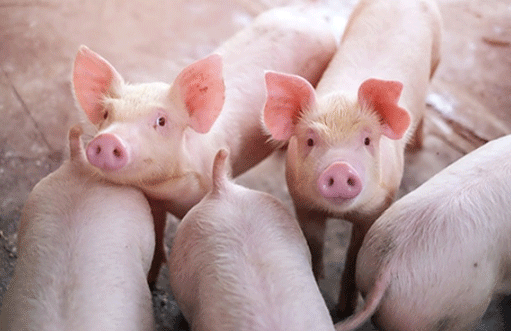Transitioning to Zero ZnO: Phileo’s nutritional strategy
Published: April 19, 2022
By: Wouter de Bruin, Western Europe Manager Swine at Phileo, and Niels Poulsen, Central & Eastern Europe Manager Swine at Phileo.
Summary
Use of zinc oxide (ZnO) as a veterinary medicinal product will be banned in the European Union (EU) starting June 2022. Phileo’s nutritional approach helps to make a transition to zero zinc as smooth as possible. Wouter de Bruin and Niels Poulsen explain more what this 3-pillar approach entails.
What is the incentive for the EU ban?
The EU ban entails the use of high levels of ZnO (known as veterinary levels), which can be defined as levels above 150 parts per million (ppm). High levels of ZnO increase the risk of heavy metal accumulation in the environment and the potential for antimicrobial resistance. We should not forget that zinc is an essential part of swine diets, at nutritional levels (below 100ppm). Zinc is needed for various enzyme to work properly and it stimulates immunity and nutrient metabolism. Zinc also contains antimicrobial properties and can help increase feed intake.

Can we do without these high levels?
The EU countries that have been producing without therapeutic ZnO in piglet diets are the proof that it is indeed possible to do so without losing production efficiency and without increasing antibiotics. In these countries we have seen that there is no single bullet that can replace ZnO. A more holistic approach is required looking at management, nutrition, and animal health. To be more specific, investing in a healthy microbiome, limiting pathogen pressure and ensuring feed intake are at the core of efficient production of pigs without the need for therapeutic ZnO or antibiotics. But also the sows’ nutritional strategies should be critically looked at to make sure that she produces high quality piglets among others. Frequent supplementation of fresh feed to all piglets before weaning also contributes to successful weaning. And, properly cleaned, dried and pre-heated housing for newly weaned piglets can make a difference too.
How does your ‘Program Zero ZnO’ work?
Because a transition to zero ZnO is a holistic approach, we have developed the ‘Program Zero ZnO’ that includes three pillars to address nutritional and health challenges. First, strengthening the microbiome by creating an environment that favours beneficial bacteria, strengthening the microbial balance to reduce the risk of digestive disorders, and reducing the microbial variation between piglets to achieve uniform piglets. Secondly, reducing pathogen pressure by preventing pathogens from adhering to the gut wall by binding to our yeast solutions, limiting shedding of pathogens, and reducing the risk of inflammation and diarrhoea. Thirdly, enhancing feed intake. The sow’s milk is rich in glutamic acid and has a strong umami flavour. Maintaining similar taste and flavour in piglet feed helps to increase intake.
What are the key ingredients in your program?
In our ‘Program Zero ZnO’ we use different types of yeast products. Actisaf® is a yeast probiotic, Safmannan® is a yeast postbiotic, and Prosaf® is a functional yeast extract. Actisaf® improves microbial population to benefit the piglet’s health and feed efficiency by enhancing the environment in the hind gut. Safmannan® reduces pathogen pressure to prevent digestive disorders by binding bacteria such as E. coli. At the same time, Safmannan® reduces the negative impact of inflammation on piglet’s performance. Prosaf®, rich in glutamic acid, stimulates early feed intake. The high digestible amino acids present in free form of small size biopeptides ensure high digestibility allowing reduced crude protein levels in the feed. The presence of nucleic acids helps with the development of young piglets’ digestive tract. These different types of yeast-based products each have their own recommended inclusion rates.
How can your program help in overall pig performance?
By investing in proper development of the intestinal tract and microbiome of piglets, we often see that at the age of about 70 days, piglets on ‘Program Zero ZnO’ outperform the piglets supplemented with therapeutic ZnO in terms of average daily gain. Recently, a trial was conducted at a research facility in Denmark showed that the average daily gain of piglets receiving therapeutic ZnO was similar to those piglets which received solutions from our program. Particularly in the last stage of the nursery, the piglets on our program had a higher daily weight gain compared to the piglets receiving ZnO. This suggests that the life performance of pigs increases as it is well known that higher daily gain during the nursery stages positively impacts the performance of growing/finishing pigs.
Related topics:
Authors:
Phileo by Lesaffre
Influencers who recommended :
Clara BergerRecommend
Comment
Share

Would you like to discuss another topic? Create a new post to engage with experts in the community.







